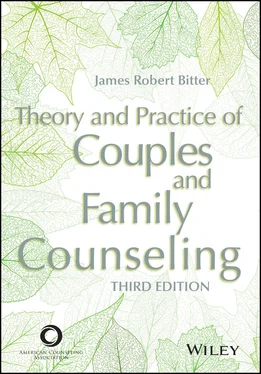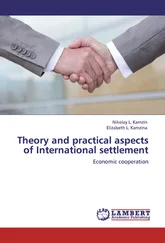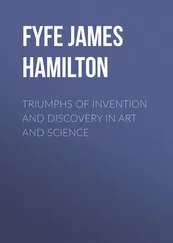James Robert Bitter - Theory and Practice of Couples and Family Counseling
Здесь есть возможность читать онлайн «James Robert Bitter - Theory and Practice of Couples and Family Counseling» — ознакомительный отрывок электронной книги совершенно бесплатно, а после прочтения отрывка купить полную версию. В некоторых случаях можно слушать аудио, скачать через торрент в формате fb2 и присутствует краткое содержание. Жанр: unrecognised, на английском языке. Описание произведения, (предисловие) а так же отзывы посетителей доступны на портале библиотеки ЛибКат.
- Название:Theory and Practice of Couples and Family Counseling
- Автор:
- Жанр:
- Год:неизвестен
- ISBN:нет данных
- Рейтинг книги:5 / 5. Голосов: 1
-
Избранное:Добавить в избранное
- Отзывы:
-
Ваша оценка:
- 100
- 1
- 2
- 3
- 4
- 5
Theory and Practice of Couples and Family Counseling: краткое содержание, описание и аннотация
Предлагаем к чтению аннотацию, описание, краткое содержание или предисловие (зависит от того, что написал сам автор книги «Theory and Practice of Couples and Family Counseling»). Если вы не нашли необходимую информацию о книге — напишите в комментариях, мы постараемся отыскать её.
Theory and Practice of Couples and Family Counseling — читать онлайн ознакомительный отрывок
Ниже представлен текст книги, разбитый по страницам. Система сохранения места последней прочитанной страницы, позволяет с удобством читать онлайн бесплатно книгу «Theory and Practice of Couples and Family Counseling», без необходимости каждый раз заново искать на чём Вы остановились. Поставьте закладку, и сможете в любой момент перейти на страницу, на которой закончили чтение.
Интервал:
Закладка:
For Boszormenyi-Nagy, the central issues in family counseling were trust and loyalty. These attributes had to be shared and evenly exchanged so that there was a balance in the family; that is, every member could count on other members in the balance of the family ledger. This distinctly ethical approach to family counseling was thoroughly described by Boszormenyi-Nagy (1987) and by Boszormenyi-Nagy and Framo (1965/1985).
James Framo would eventually leave for Southern California, where he would begin to define a bridge between individual and multigenerational family counseling (Framo, 1992). His emphasis on therapists knowing themselves and paying attention to family-of-origin relationships places him clearly in the line of influence that would eventually become object relations family counseling as well as Bowen family therapy.
Other key figures had originally been psychoanalytically trained but went on to develop early approaches to family counseling. Theodore Lidz and his colleagues at Yale University would focus on fathering practices in families with schizophrenic patients, relieving mothers of their often-blamed position. Lyman Wynne, a Harvard-trained psychiatrist, headed the National Institute of Mental Health (NIMH) in the early 1950s. His work, which focused on dysfunctional communication in families, gave us such concepts as pseudomutuality , a facade of cooperation that masks conflict and derails intimacy; pseudohostility , a rather stereotyped approach to bickering or fighting that again masks a deeper hostility; and the rubber fence , or the ability of tightly controlled, pathological families to let members function in the outside world yet haul them back into family isolation if they go beyond simple tasks like going to school or work. And John Elderkin Bell was inspired by what he believed was John Bowlby’s work with a family in England and returned to Clark University in Massachusetts to invent family group counseling.
Although Adler was clearly engaged in family counseling in the 1920s, it was Rudolf Dreikurs who systematized Adler’s approach and brought it to the United States (Terner & Pew, 1978). In 1940, Dreikurs introduced the four goals of children’s misbehavior and combined this concept with an investigation of the family constellation (the family system), interactions during a typical day, and a process for goal disclosure with children, which actually led to what Dreikurs called a recognition reflex , or a quick smile with a twinkle in the child’s eye.
Dreikurs opened the Alfred Adler Institute in 1954 and began teaching Adlerian open forum family counseling in colleges, community agencies, and schools throughout the Chicago area. In a course at Northwestern University, he provided initial training to two students, Ray Lowe and Manford Sonstegard, who would start the spread of his methods across the United States. Lowe brought Dreikurs to Oregon, where he would engage the interest of Oscar Christensen. Christensen would later leave Oregon to teach at the University of Arizona, where he would train family counselors for more than 30 years. Similarly, Sonstegard brought Dreikurs to Iowa, where “Sonste” had started his work. When Sonste moved to West Virginia University, he began to train Adlerian family counselors and paraprofessionals throughout the eastern part of the United States and in Europe. In 1974, I joined Sonste in West Virginia; together, we would train Adlerian family counselors for more than 30 years.
One of Dreikurs’s other students was Don Dinkmeyer, a man destined to be one of the most prolific writers in Adlerian circles. Together with his son, Don Dinkmeyer, Jr., and other Adlerian leaders, like Len Sperry and Jon Carlson, Don Dinkmeyer set out to define Adlerian practice with couples and families. The Dinkmeyers also developed STEP: Systematic Training for Effective Parenting (Dinkmeyer et al., 1997). Today no two people have done more to articulate the Adlerian approach to couples and families than Len Sperry and Jon Carlson.
Murray Bowen
Like Ackerman, Bowen too was a psychiatrist at the Menninger Clinic in the late 1940s; he was originally trained there in psychoanalysis, but his work soon focused on relational family processes. By the early 1950s, Bowen was already working on the relationship between mother and child in schizophrenic families. It was at Menninger that Bowen first experimented with having family members (mother and child) live together in cottages at the clinic. Bowen expanded this experiment when, in 1954, he left the clinic to work at NIMH. At NIMH, Bowen hospitalized whole families of schizophrenic patients for study and research purposes. Bowen was at NIMH for only 5 years before moving to the Department of Psychiatry at Georgetown University. Although Bowen was never able to carry on the level of family research at Georgetown that he had achieved at NIMH, he was able to develop perhaps a more complete family systems theory than any of the early pioneers.
Bowen’s theory was the first to indicate that problems could be transmitted across generations; his model focused on triangulation processes in families and the tendency of family members to engage in emotional reactivity. Bowen also recognized that the family system was often stronger at pulling the therapist into its process (the undifferentiated family ego mass) than the therapist was at getting the family to change. Bowen’s emphasis on differentiation and specifically on one’s differentiation of self started at Menninger, but it was fully developed while he was at Georgetown.
At Georgetown, Bowen offered training programs that would eventually produce some of the most important leaders in family counseling. Phillip Guerin and Tom Fogarty greatly enhanced Bowen’s work with triangles, describing a five-step process for detriangulation in both individual and family counseling (Guerin et al., 1996).
Betty Carter and Monica McGoldrick, both trained by Bowen, would develop the family life cycle (McGoldrick et al., 2015), and Monica McGoldrick would lead the way in the development of genograms (McGoldrick et al., 2020) and our understanding of race, culture, and gender in family practice (McGoldrick & Hardy, 2019). Indeed, without Monica McGoldrick there would not be a fully developed set of lenses on race, culture, and gender.
Carl Whitaker
Carl Whitaker and Murray Bowen were about as opposite in process as two family therapists could get. Bowen developed an elegant theory-based practice; Whitaker avoided theory in favor of developing the spontaneity of the therapist. Bowen preferred to work alone, focusing on coaching the most differentiated person in the family system; Whitaker most often worked with cotherapists. Bowen worked on big stages at NIMH and Georgetown University in Washington, DC; Whitaker started his career in Oak Ridge, Tennessee, and the largest institutions for which he would work were state universities.
Whitaker’s symbolic-experiential approach to family counseling, though certainly spontaneous, was not without structure. Whitaker’s approach to family counseling was similar to that of some existential therapists. He believed that families often got stuck in patterned responses, routines, and rules that stagnated the growth of both the system and the individuals within the system. He believed that real change did not occur without anxiety, so rather than providing warmth and acceptance, Whitaker and colleagues were much more likely to up the ante, seed the unconscious, and engage in the absurd. All of this was in the service of creating more flexibility in the family system, helping family members to be more human, and promoting real intimacy within the family.
Whitaker and John Warkentin started seeing families together at Oak Ridge Hospital in Tennessee between 1944 and 1946. In 1946, they left Oak Ridge to start the Department of Psychiatry in the medical school at Emory University in Atlanta, Georgia. Thomas Malone came to Emory to work with Whitaker, and together they would write one of the foundational texts for their approach to psychiatry (Whitaker & Malone, 1953/1981). Whitaker would also start to hold conferences twice a year in which family therapists primarily from the Philadelphia area would join his staff in demonstrations of counseling behind one-way screens— perhaps the first use of this method in the field. The last meeting in 1955 included Gregory Bateson and Don Jackson. Whitaker’s private practice in Atlanta, where he worked for 9 years, included colleagues John Warkentin, Thomas Malone, and Richard Felder. It was after his move to the University of Wisconsin at Madison in 1965 that his most important works would be published. Gus Napier and Whitaker (1978) teamed up to write what many consider one of family counseling’s masterpieces, The Family Crucible . Whitaker and David Keith would bring their work to the center of family counseling scholarship, and in the late 1980s, Whitaker and William Bumberry (1988; Bumberry & Tenenbaum, 1986) produced a video and book on Carl’s intensive work with a depressed family from the heartland of the United States.
Читать дальшеИнтервал:
Закладка:
Похожие книги на «Theory and Practice of Couples and Family Counseling»
Представляем Вашему вниманию похожие книги на «Theory and Practice of Couples and Family Counseling» списком для выбора. Мы отобрали схожую по названию и смыслу литературу в надежде предоставить читателям больше вариантов отыскать новые, интересные, ещё непрочитанные произведения.
Обсуждение, отзывы о книге «Theory and Practice of Couples and Family Counseling» и просто собственные мнения читателей. Оставьте ваши комментарии, напишите, что Вы думаете о произведении, его смысле или главных героях. Укажите что конкретно понравилось, а что нет, и почему Вы так считаете.












